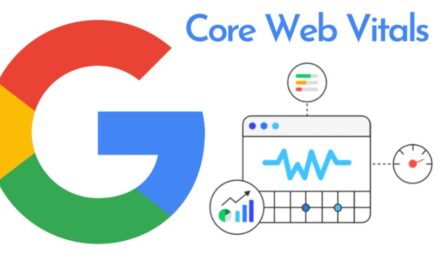Predictive analytics is transforming how companies handle their strategic planning by utilizing data-driven insights to foresee future trends, improve decision-making, and elevate customer experiences. By utilizing this effective resource, businesses can acquire a competitive advantage, enhance efficiency, and boost profits. This article will help you understand how to effectively utilize predictive analytics for enhanced strategy.
Understanding Predictive Analytics: The Basics
Predictive analytics employs past data, statistical methods, and machine learning techniques to project future results. It delivers actionable insights that guide decision-making by recognizing patterns and relationships in historical data. This method allows companies to remain at the forefront of trends and adjust their strategies as needed.
Key elements of predictive analytics include data collection, data cleaning, model building, and validation. The process ensures that the data is reliable and the predictive model yields accurate results. Popular tools for predictive analytics include IBM SPSS, SAS Advanced Analytics, and open-source platforms such as Python and R. These tools offer comprehensive functionalities for data analysis, predictive modeling, and reporting.
Grasping the fundamentals of predictive analytics is crucial for integrating it into strategic business choices. When combined with predictive SEO analyses and digital forecasting, it turns into a valuable tool for developing a proactive strategy that fits market trends and customer demands.
Building a Data-Driven Culture
For effective integration of predictive analytics, organizations must cultivate a data-oriented culture. This cultural change involves placing data at the heart of decision-making processes and guaranteeing that every department appreciates and applies data insights. A robust data-oriented culture allows companies to react swiftly to market changes and make well-informed strategic choices.
Developing a data-driven culture starts with leadership advocating for the change and modeling data-centric behavior. Providing training programs and resources helps employees develop the skills necessary to analyze and interpret data. Cross-departmental collaboration can further enhance the use of predictive analytics, allowing teams to share insights and align strategies.
For instance, marketing teams working with data scientists can better align their campaigns with predictive SEO insights. This approach helps businesses create content that not only resonates with their audience but also ranks highly in search engines. The integration of predictive analytics fosters proactive strategy development, allowing companies to capitalize on emerging trends and maintain a competitive edge.
It’s essential to overcome resistance to this cultural change. Workers might be reluctant to embrace new procedures, thus clear communication regarding the advantages of predictive analytics is essential. Presenting instances of initial achievements and offering continuous assistance can enhance commitment. By cultivating a data-oriented culture, organizations create the foundation for long-term growth and innovation.

Using Predictive Analytics for Strategic Forecasting
A key application of predictive analytics is strategic forecasting. Companies can utilize past and current data to predict market trends, comprehend consumer behavior, and recognize possible risks. This forecasting method allows businesses to create proactive strategies that provide them with a competitive edge.
For instance, retailers frequently utilize predictive analytics to anticipate product demand during particular seasons or promotional times. This enables them to enhance inventory management, minimizing the chances of overstocking or running out of stock. By utilizing digital forecasting tools, companies can adjust their supply chain and marketing approaches to align with expected demand.
Predictive SEO insights play a significant role in digital marketing strategies. With data-driven foresight, companies can anticipate search trends and create content that ranks well before competitors do. Using SEO tools that integrate predictive analytics, businesses can identify emerging keywords and optimize their content accordingly. This approach not only increases visibility but also captures early traffic and positions the brand as a leader in its industry.
Case studies illustrate that companies using predictive analytics for strategic forecasting achieve better decision-making, efficient resource allocation, and improved profitability. The results underscore the importance of predictive analytics in crafting sustainable, growth-oriented business strategies.
Enhancing Customer Experience and Retention
Predictive analytics can significantly elevate customer experience and retention. By analyzing customer data, businesses gain insights into preferences, buying behaviors, and potential pain points. This understanding allows for highly personalized marketing strategies and proactive customer engagement.
For example, online shopping sites can utilize predictive analytics to monitor buying trends and suggest items that match personal customer preferences. This degree of customization improves the shopping experience, resulting in increased conversion rates and customer contentment. In the same way, subscription-based services can recognize customers who may cancel and implement proactive strategies to keep them, like providing specific discounts or incentives.
Predictive analytics allows companies to effectively segment their audience, ensuring marketing initiatives target the appropriate individuals at the optimal moment. By utilizing predictive SEO insights, businesses can develop content that meets the unique needs and interests of various customer segments. This focused strategy enhances engagement while also fostering enduring customer loyalty.
Customer service teams benefit from predictive analytics by anticipating potential issues and preparing solutions in advance. For example, analyzing customer support data can reveal common problems that may arise, allowing teams to create resources and training to address them proactively. The result is a seamless customer experience that fosters trust and loyalty.
Optimizing Operations and Resource Management
Operational efficiency is another key benefit of predictive analytics. Companies can use predictive models to optimize their supply chains, forecast demand, and manage resources effectively. For instance, manufacturers can predict equipment failures and schedule maintenance ahead of time, reducing unexpected downtime and minimizing repair costs.
In the logistics industry, predictive analytics can assist with optimizing routes. By examining traffic trends and past delivery information, logistics companies can create more effective routes, reducing time and fuel expenses while enhancing service delivery. Digital forecasting solutions assist companies in readying themselves for possible interruptions, like extreme weather or supply chain setbacks, enabling them to devise contingency plans and flexible strategies.
Workforce management also benefits from predictive analytics. Retailers can forecast peak hours and staff their stores accordingly, ensuring optimal service without overstaffing or under-resourcing. This proactive strategy ensures operations run smoothly, resources are allocated efficiently, and customer satisfaction is maintained.
The proactive strategy made possible by predictive analytics enables companies to not only streamline their operations but also achieve cost savings and increase productivity. This strategic approach allows businesses to respond to changing market dynamics with agility and precision.

Challenges and Ethical Considerations
Although predictive analytics provides significant advantages, it also presents difficulties. Data quality, integration challenges, and the intricacy of creating precise predictive models can impede effectiveness. Businesses must guarantee that their data is thorough, accurate, and current to create trustworthy models. Combining data from various sources into one predictive model can also be challenging but is essential for thorough analysis.
Ethical considerations must also be taken into account. Data privacy is a significant concern, especially when dealing with customer information. Companies must handle data responsibly and comply with privacy regulations such as the General Data Protection Regulation (GDPR). Transparency in how data is collected and used helps build trust with consumers and stakeholders.
Algorithmic bias is another potential issue. If predictive models are trained on biased data, they may produce biased results, leading to unfair outcomes. Regular audits of predictive algorithms can help identify and mitigate biases, ensuring that the models used are fair and objective.
To address these challenges, businesses should establish robust data governance frameworks, prioritize ethical practices, and maintain transparency in their predictive analytics processes. These measures help ensure that the advantages of predictive analytics are harnessed responsibly and effectively.
Conclusion
Incorporating predictive analytics into business strategy offers numerous advantages, including enhanced decision-making, improved customer experiences, and optimized operations. By fostering a data-driven culture, businesses can fully leverage the potential of predictive analytics and remain competitive in an ever-evolving market.
The incorporation of predictive SEO analysis, digital forecasting instruments, and forward-thinking strategy formulation enables businesses to adjust to shifts and seize new opportunities. Tackling issues like data integrity and ethical considerations is crucial for sustained success. By prioritizing transparency, adherence to regulations, and equity, organizations can enhance the advantages of predictive analytics while fostering trust with stakeholders.
Embracing predictive analytics allows businesses to move beyond reactive strategies and position themselves as forward-thinking leaders. In an era where data-driven insights shape the future, leveraging predictive analytics effectively can ensure resilience, adaptability, and sustained growth.











